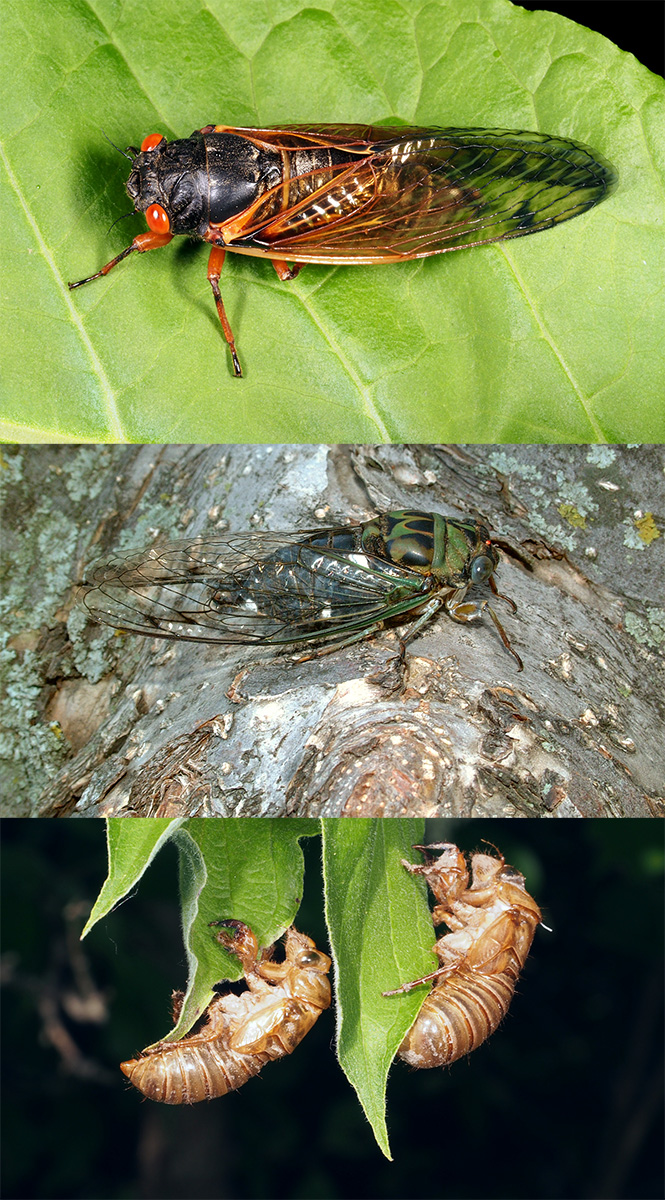
By Kait Chapman, Extension Educator in Lancaster County
There’s no other insect that gets me quite as nostalgic as the cicada. The loud sound of cicadas trilling in the evenings and the hunt for shed cicada shells on the bark of trees brings back fond memories of summer. Luckily, cicadas are harmless, albeit large, beauties that bring a touch of wilderness to urban areas.
Cicadas have a unique lifecycle that has them spending the majority of their life underground, feeding on the sap from the roots of hardwood trees. In Nebraska, our most commonly encountered species of cicadas will spend three to five years underground in this juvenile stage. We call these “annual” cicadas, because their staggered emergence makes them appear every year.
As cicadas are ready to complete their lifecycle, they emerge from the ground and climb up trees, fences and buildings to shed their exoskeletons and unfurl their wings. The adults are most active July to September. This is also when you’re most likely to hear the distinct humming of male cicadas trying their best to attract females. To complete their lifecycle, mated females will lay eggs in tree twigs. Once the juvenile cicadas hatch, they will fall to the ground and burrow into the soil.
However, for a truly unique experience, mark your calendar for the year for the Brood IV emergence of 17-year cicadas in 2032. As their name suggests, 17-year cicadas spend an amazing 17 years underground and emerge all together in an ear-splitting event. Brood IV is the only brood that reaches the state of Nebraska, and even then, they are only present in southeastern Nebraska, including the Lincoln- and Omaha-areas. Unlike the green- and brown-colored annual cicadas, the 17-year or periodic cicadas have black bodies and spectacular red eyes. While it will be quite some time until we get to experience the extraordinary emergence of periodical cicadas, we still have annual cicadas to marvel at in the meantime.